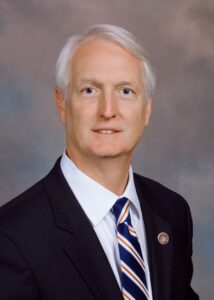
by Dick Hall-Sizemore
One of the good bills introduced in the General Assembly this year would bring a measure of competition in public schools. Put in by Sen. Mark Peake (R-Lynchburg), SB 552 would require school districts to allow students to attend any school in the district. Currently, districts are allowed to adopt such open enrollment policies, but are not required to do so. Typically, students must attend the school within the attendance zone where they live.
The legislation would enable an elementary school student in the eastern part of Henrico County, for example, where the reading scores in schools are very low, to attend an elementary school in the western part of the county, which has schools with high reading scores. If the requests for “nonresident” students to attend a particular school exceed that school’s enrollment capacity, a lottery would be used to decide which nonresident students got to attend that school.
The legislation directs the State Board of Education to develop model policies and guidelines to implement the legislation. Under the provisions of the legislation as introduced, the Board would have to act quickly. The bill requires the policies and guidelines to be adopted by August 1, 2024, to enable the open enrollment process to be in effect for the next school year, 2024-2025.
The main obstacle to parents being able to take advantage of open enrollment, of course, is transportation. In the Henrico example, it is a long drive from Varina to the West End. The legislation specifies that the model policies and guidelines set out “responsibilities relating to school transportation for a nonresident student.” State law does not require school divisions to provide transportation for students; it only authorizes it. Conceivably, the Board could require local schools to provide transportation for nonresident students if they provide transportation for students within an attendance zone. That would be the fair approach. After all, if a student in the West End is able to ride a school bus to Maybeury Elementary School at public expense, Henrico should also provide transportation for a student who lives in Sandston to attend that school. However, to ensure that the Board could adopt such an approach, it would be best to amend the proposed legislation to make that clear.
Making a county or city responsible for transportation of nonresident students would inevitably increase the overall transportation costs for the school district. It would also ultimately be a fiscal impact for the state as those increased transportation costs are reflected in the basic aid formula for schools. Perhaps those increased transportation costs would be an incentive for school districts to improve those neighborhood schools that parents are fleeing.

Leave a Reply
You must be logged in to post a comment.